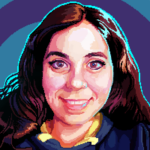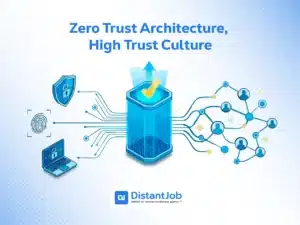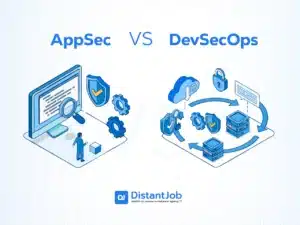Laravel is an open-source PHP framework designed for developing structured and pragmatic web applications. Known for its robustness and ease of use, Laravel leverages opinionated solutions for web development..
Let’s dive deeper into everything Laravel offers for a PHP web developer and how to install it on your premises.
5 Reasons why Laravel is so popular
Laravel’s popularity comes from its developer-friendly features, clear and expressive syntax, and elegant solutions. The framework simplifies web development by automating repetitive tasks. It also offers powerful built-in features and promotes best practices. Laravel also boasts a strong community support, and its focus on security also contributes to its widespread adoption.
1. Developer Productivity and Ease of Use
Many developers are already familiar with PHP, making it easier to learn and adopt Laravel. Laravel’s Artisan console offers a variety of commands for common tasks, further streamlining development. Plus, Laravel’s syntax is known for being clean, expressive, and easy to understand, making it easier to learn and work with.
It has a range of built-in tools and features, such as authentication, routing, and templating, that save developers time and effort. Also, Laravel PHP framework’s documentation is top-notch, guiding developers through various features and functionalities. Finally, Laravel’s large and supportive community provides resources, assistance, and solutions for developers.
2. Security Features
Security is a Laravel concern; it secures passwords by hashing and salting them, preventing them from being stored in plain text. Adding another layer of security, Laravel uses the Bcrypt algorithm to encrypt passwords and provides an authentication system.
3. Performance and Scalability
Octane, Laravel’s boosting performance package, enables efficient code execution and faster loading times, coming toe to toe with Lumen. Octane is not an engine, but it enhances Laravel’s performance by helping servers to handle requests more efficiently.
Laravel is also well-suited for both small websites and large-scale enterprise applications, offering more scalability.
4. MVC Architecture and Templating Engine:
Laravel follows the Model-View-Controller (MVC) pattern, which promotes code organization, maintainability, and testability. MVC separates an application into three interconnected parts: the Model, View, and Controller.
The Model manages the application’s data and business logic (for example, a database). The View presents the user interface, displaying data from the model and handling user interactions. The Controller acts as an intermediary, receiving user input, processing it with the model, and updating the view.
Blade, Laravel’s templating engine, simplifies the creation of dynamic web pages with template inheritance and many other features. It facilitates building and organizing HTML code that your web application will show to users.
5. Other Factors
Laravel boasts a wide array of object-oriented libraries, enhancing code reusability and maintainability. Modules (small web application packages) in Laravel are designed to be individual and independent, promoting modularity and flexibility.
Is Laravel Front-End or Back-End?
The Laravel PHP Framework is mainly back-end; however, it incorporates Blade, a strong Template Engine, for Front-End users. Effectively, we could say that Laravel is actually a Full-Stack Framework, allowing full utilization at every step of the web development process.
How to connect Laravel with PHP?
You don’t “connect” the Laravel framework with PHP in the same way you might connect a front-end framework to a back-end API. Instead, you ensure your PHP environment is correctly set up to run Laravel, and then you develop your application using Laravel’s PHP-based framework. In short, Laravel is fully integrated with PHP.
Step: 1: Install a Local Development Environment
This framework runs on top of PHP, so the first thing you will need before getting started is to install PHP and a web server on your local machine. The best web servers we recommend installing on your machine include Apache and Nginx. These two are the most popular open-source web servers that developers use.
If you are a starter, we recommend you to install a local development environment with everything ready as XAMPP, WAMP, Laragon (for Windows), or MAMP (for macOS). These environments install PHP, the web server, Laravel, and the database all at once.
Step 2: Composer
Check if your package has already installed Composer with this command:
composer --versionIf it’sn’t installed yet, download it from the official site. You will use Composer for many commands.
Step 3: Create a New Laravel Project
Open the terminal in the directory you wish to create your project and type the following command:
composer create-project laravel/laravel your-projectThis command makes everything at once: it downloads a version of Laravel for your environment, its dependencies, and creates a new directory with your-project’s name.
4. Start Your Development Server
Enter your project’s directory (cd your-project) and start the web server embedded in Laravel:
php artisan serveNow open your browser to the local web address http://127.0.0.1:8000 (or http://localhost:8000) to see Laravel’s starting page.
Conclusion
Laravel is an excellent PHP server-side scripting framework ideal for beginners and experienced developers. It makes it easy for developers to create well-optimized, secure, and high-performance websites and web applications. Installing and using this framework is also pretty straightforward if you know what to do. So, if you are out there looking for a reliable framework for PHP, Laravel is the best option available right now.
If you need PHP developers to help you enhance your website, hire now! With DistantJob, you can successfully scale your IT team 60% faster than the industry average! On the other hand, if you’re a skilled PHP remote developer looking for your next opportunity, what are you waiting for? We´re always seeking new talent! Apply today and find your dream job!





